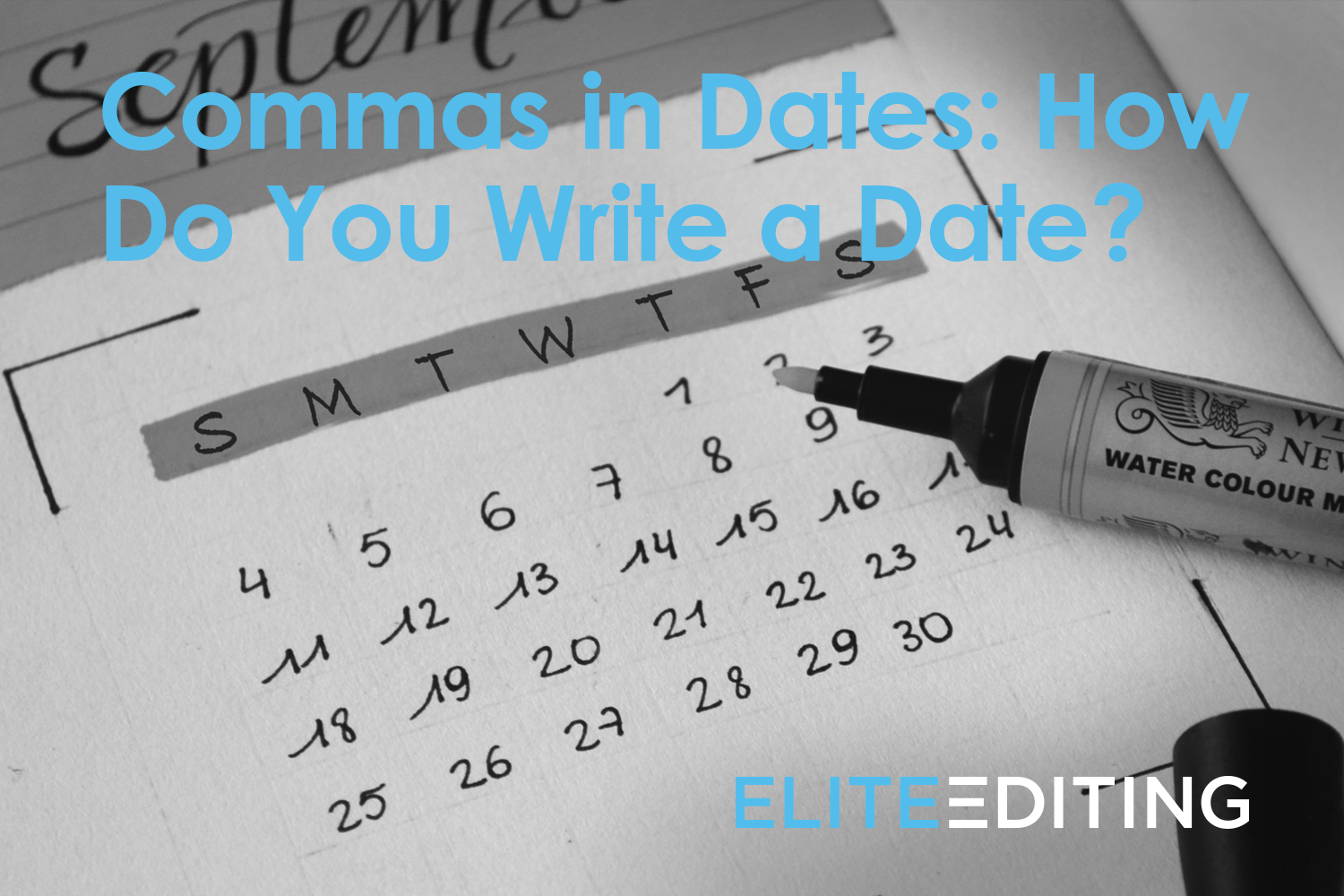
Using commas in dates in the American format requires that we separate the weekday from the month and the date from the year with commas: Saturday, April 30, 1993.
Although this is the most common format for dates, there are exceptions. Join us as we explore the ins and outs of the various commas in dates rules, as well as the commas after date conundrum.
How Do You Write a Date with Just the Month and the Year?
When you write dates that include only the month and the year, no commas are necessary:
- Correct: I met my true love in September 1990.
- Incorrect: I met my true love in September, 1990.
Use of Commas in Dates Including the Month, Date, and Year
When writing dates that include the month, date, and year, use commas after dates but not after months:
- Correct: We realized we were in love on March 16, 1992.
- Incorrect: We realized we were in love on March 16 1992.
- Incorrect: We realized we were in love on March, 16, 1992.
Where Are Commas in Dates That Include the Weekday, Date, and Year?
In dates that include the weekday, you follow the same rule as above and add a comma between the weekday and the date:
- Correct: We began dating on Friday, May 1, 1992.
- Incorrect: We began dating on Friday May 1, 1992.
Commas and Dates at the Beginning of Sentences
So far we’ve dealt exclusively with the use of commas in dates at the end of sentences. When the date appears at the beginning of a sentence, you apply the same rules but include a comma after the year:
- Correct: April 15, 2018, marks our twenty-fifth wedding anniversary.
- Incorrect: April 15, 2018 marks our twenty-fifth wedding anniversary.
Where Are Commas in Dates in the Middle of Sentences?
Dates sometimes crop up in the middle of sentences. The correct commas after date rule is based on what type of date is used in the sentence. If you have the month-date-year format, a comma is always required after the year. If you just have a month and a year or a month and a day, using commas after dates depends on context:
- Correct: Our wedding in April 1993 was beautiful.
- Incorrect: Our wedding in April 1993, was beautiful.
- Correct: Our wedding on April 15, 1993, was beautiful
- Incorrect: Our wedding on April 15, 1993 was beautiful.
- Correct: When the honeymoon ended on May 1, we went home.
- Incorrect: When the honeymoon ended on May 1 we went home.
In that last example, the commas after date rule was actually affected by the rule governing commas after dependent clauses, which you can learn more about here!
Do You Use Commas after Dates at the End of Sentences?
With all this talk about using commas and dates, people sometimes get confused and put commas after dates at the end of sentences. This isn’t necessary—all you need is a period.
- Correct: My wife gave birth to our first child in August 1994.
- Incorrect: My wife gave birth to our first child in August 1994,.
How Do You Write a Date in the “Inverted Style”?
So far, we’ve been discussing commas in dates using the month-date-year format common in American usage. Most of the world uses an inverted style, where the date comes first, followed by the month and year. The date-month-year format also takes a different approach to commas.
While the month-day-year date format is standard in the United States, most countries use a day-month-year format. In fact, only the United States, the Philippines, Palau, the Federated States of Micronesia, Canada, and Belize use a month-day-year format, which can cause confusion when dates are presented numerically. For instance, 3/5/1990 means March 5, 1990, in the United States but May 3, 1990, in Europe.
How to Write Inverted Dates: Date, Month, and Year
Inverted dates also do not use commas between dates, months, and years, which can look peculiar to anyone familiar with the American date system:
- Correct (inverted style): Our second child was born 19 January 1996.
- Incorrect (inverted style): Our second child was born 19 January, 1996.
Inverted Dates and Weekdays
There is one occasion when inverted style dates use commas: when the date includes a weekday. A comma separates the weekday from the rest of the date:
- Correct (inverted style): I met my wife on Monday, 2 September 1990.
- Incorrect (inverted style): I met my wife on Monday 2 September 1990.
What about Special Dates?
Special dates may have unique names, such as Christmas and Independence Day. When written as dates, however, these have the same comma usage as ordinary dates.
- Correct: On July 4, 2018, Americans will celebrate their independence.
- Correct: My whole family will meet for Christmas on December 25, 2018.
- Incorrect: We had a terrific party on Independence Day 4, 1997.
- Incorrect: My whole family will celebrate on Christmas 25, 2018.
Using Commas Is Easy with Practice
The proper use of commas in dates isn’t that difficult: there are more complicated comma mistakes lurking in the English language, and you can learn to avoid those here. Just remember that the weekday-month-date-year format has commas between the weekday and month and the date and the year, and you’ll be well on your way to knowing all about commas and dates.
Resources
http://www.thepunctuationguide.com/british-versus-american-style.html
https://britishisms.wordpress.com/2012/04/09/european-date-format/
http://grammartips.homestead.com/datecommas.html
http://grammar.yourdictionary.com/style-and-usage/how-to-formally-write-the-date.html
http://www.thepunctuationguide.com/comma.html#dates








